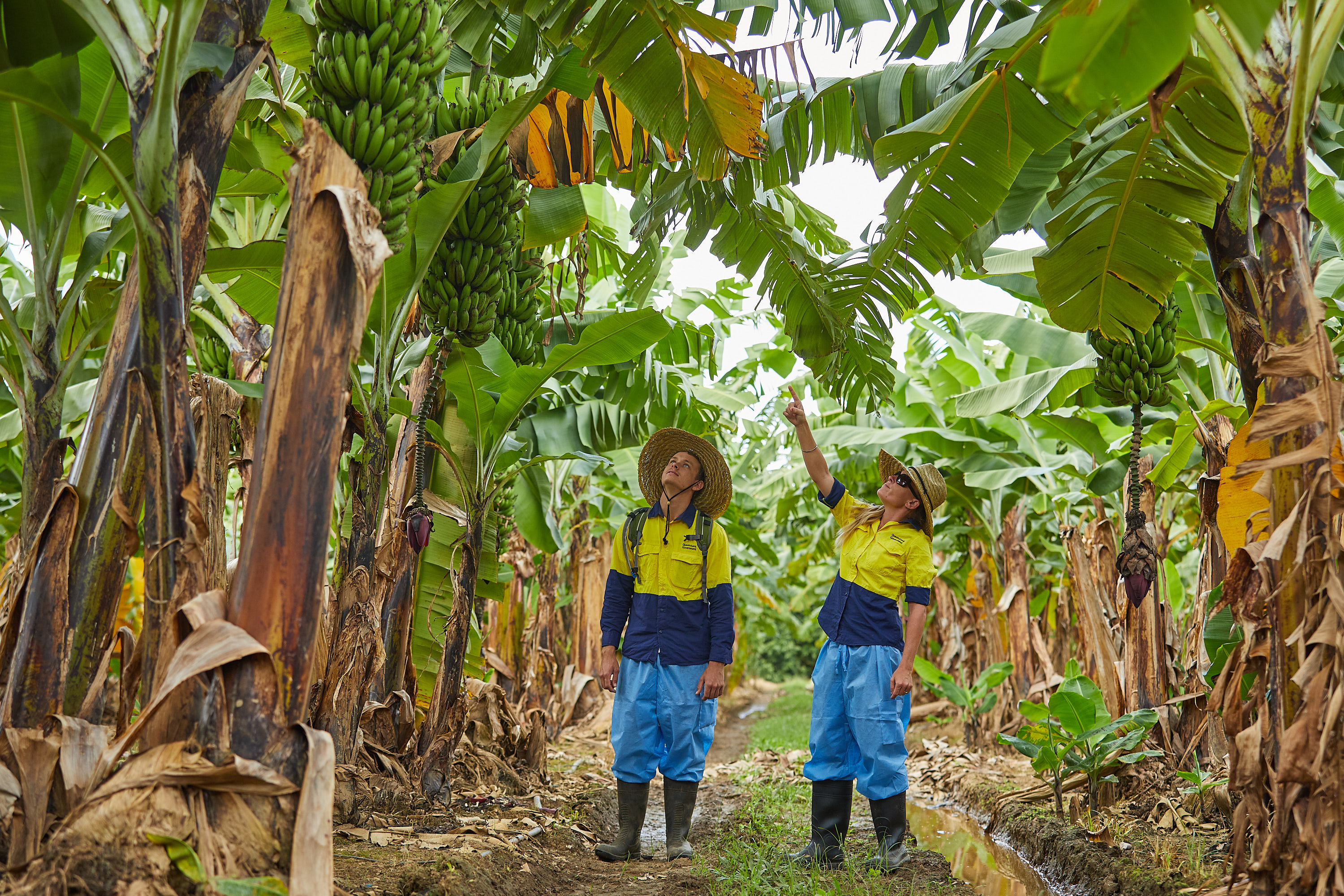By Lea Coghlan and Sarah Flenley, Biosecurity Queensland
Finding Panama disease tropical race 4 (Panama TR4) early and destroying the infected plants means less disease can build up in the soil which is beneficial to an infested farm’s viability.
To find the disease:
• growers are encouraged to check their own plants and are legally required to report signs of the disease.
• Biosecurity Queensland runs a surveillance program with trained officers that visit farms to check for signs of the disease.
Growers often ask how Biosecurity Queensland works out which farm gets surveillance and how often.
In a recent study where banana growers were interviewed about on-farm biosecurity, some growers raised concerns about Biosecurity Queensland’s surveillance program. They wanted to know what training our surveillance officers undergo to identify Panama TR4.
How do we train surveillance officers and what do they do?
Our surveillance officers are trained as authorised officers under the Biosecurity Act 2014.
Officers are trained in:
• identifying suspect plants
• collecting plant samples for testing (ensuring that the sample integrity remains intact from the paddock to the laboratory)
• thorough decontamination processes (cleaning, rinsing and disinfecting items that have been taken onto a banana farm)
• correct use and storage of chemicals (chemical certification).
There are generally three surveillance teams operating at any given time. The team comprises a senior field officer and two surveillance officers.
One team is dedicated to carrying out surveillance and compliance activities only on infested properties.
The other two teams visit farms across the banana growing regions in Far North Queensland to check plants for symptoms of the disease.
On Farm
When the team arrives, a decontamination station is set up outside the farm. This allows workers to clean boots and equipment in one easily managed area. The team undertake decontamination on entry and exit to a property to ensure there is no chance of disease spread by the surveillance activity.
Surveillance officers also wear disposable clothing that is later couriered to a quarantine secure facility.
The senior field officer meets with the grower to gain consent to enter their farm and explain what they will be doing while on the farm. It also gives the grower a chance to ask questions or advise of biosecurity conditions present on the property that need to be observed.
Jared Harman, a senior field officer with the Panama TR4 Program, believes communication with the grower is critical.
“Working with the grower to minimise any disturbance to their daily operations is important,” Jared said.
“We take into consideration their operations along with the on-farm biosecurity measures, and give the grower an opportunity to provide feedback on our plan of attack before we start.”
Jared and fellow senior field officer Chris Collier lead the surveillance teams who walk every fourth row of a banana farm looking for physical signs of the disease. This can include yellowing of leaves and a skirt of dead leaves around the stem.
A suspect plant
If a banana plant is suspected of having Panama TR4, the plant is tagged and photographed.
The plant is cut at varying heights. If it shows signs of discolouration in the vascular system, a cross section of the plant is taken, bagged and sent to the laboratory for detailed testing.
As a 12-year veteran of the banana industry, Chris appreciates what the industry means to the region.
“Without bananas, the livelihood of businesses in the area would be at risk,” Chris said. “The industry employs a significant number of people in the Cassowary Coast region and it would be rare to find a business that doesn’t rely on the industry in some way.”
While finding a banana plant suspected of having the disease is bittersweet, it’s part of the job.
“The last thing you want to do is tell a grower he has a suspect plant on his farm,” Chris said. “At the same time the first thing you want to do is detect that suspect plant if it exists.
“The earlier the detection is identified the better for the grower and the industry as early detection means early destruction which is less build up of the disease in the soil.”
A quality assurance program tracks where officers walked on the farm, and their walking pace. This ensures the agreed government and industry surveillance protocol is followed.
The surveillance team covers around 100 acres on a typical day.
Chris and Jared derive great satisfaction out of helping an industry, which is the backbone of the community in which they’ve chosen to live and raise families.
“At the end of the day, we are foot soldiers in a bigger war but as local residents we have a huge stake in making sure the industry has longevity in the community.”

